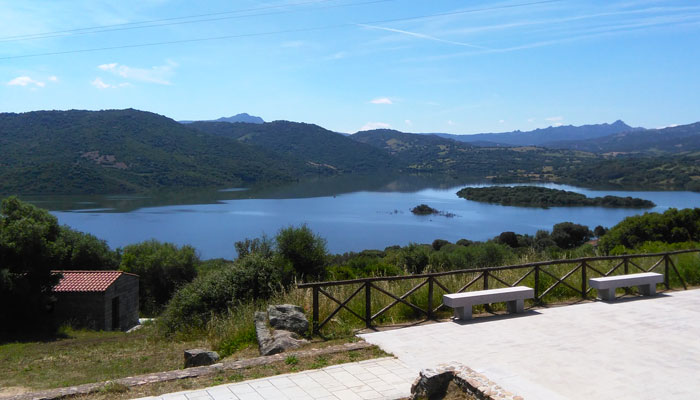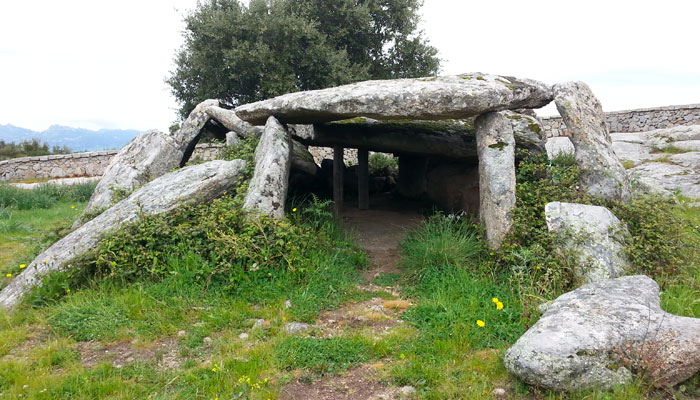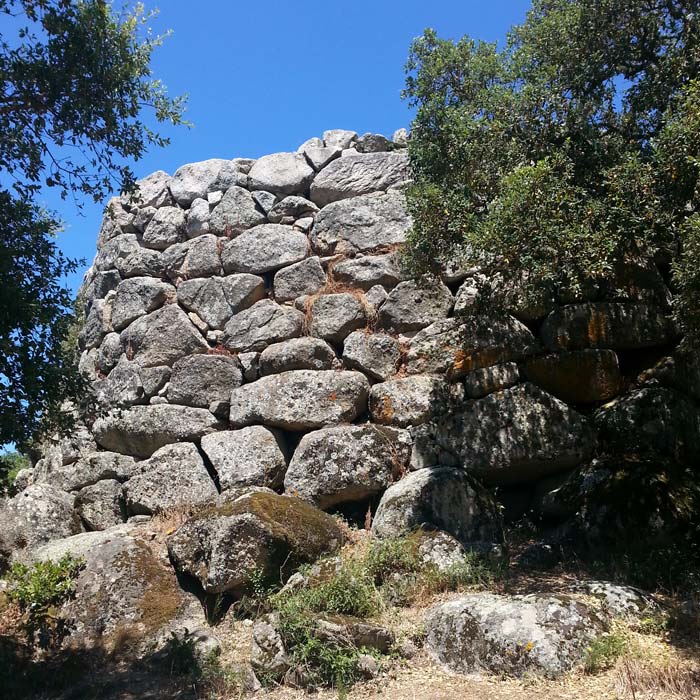The hinterland of Gallura is a fascinating place that still preserves the most authentic soul of north-eastern Sardinia.
Crossing it means discovering expanses of vineyards alternated with ever green cork forests, olive trees and holm oaks. Among its thick vegetation sprout often imposing and majestic granite rocks, another natural resource of renowned quality.
By crossing this land you will often ask yourself, if you really are in Sardinia, an island that in the collective imagination is perceived as a dry and barren land. In any season of the year you will arrive here, the surprise and the wonder will be at home: in spring the thousand colors of wild flowers give cheerful and pleasant views; in summer there are green fields, favorite destinations of the pastures of cows and goats; in autumn the vegetation resumes its natural space, becoming infused without reserve and in winter there will be the whitewashed peaks of the Limbara ... every season has its charm and its irresistible authenticity.
Our tour will take us to the shores of the artificial lake of Liscia, a basin that has collected rainwater since the '60s and which supplies all the houses and commercial activities of the lower Gallura.

A lake that for its simplicity seems to be natural and that gives peace and serenity at the sight of its waters, that reflect the color of the sky.
As soon as we arrive on the west side, I will accompany you to an extraordinary monument of nature: the oldest millenarian wild olive tree in Europe with its 3800 years of life, which has been recognized World Heritage Site by the UNESCO and among the local inhabitants is known as the Patriarch. Who knows, how many things he could tell his ecstatic visitors, if he could only speak.
Not far away stands his life partner: another wild olive tree of "just" 2000 years, that with his modest "youth" will let you dream ancient times.
After appreciating the enchanted silence interrupted occasionally by the tinkling of the little bells of the sheep that graze undisturbed, we will move to Luras, the stone village just twelve km from the lake.

After a refreshing break in one of the cafes of the center, you will begin to live an unique experience, that will bring you back a few centuries: the visit of the House Museum of the Femmina Aggabadora.
In this ancient building of the 1800s Piergiacomo Pala, a lover of the traditions of his native country, wanted to exhibit various artifacts and tools of the daily life of the local inhabitants to let know the uses and customs of his people.
Among all highlights deserves a particular attention the bedroom, where you will discover the secrets and taboos hidden for centuries of the role of a mysterious woman, who had the delicate task of ending the suffering of terminally ill people of the country, according to an ancestral ritual secreted for centuries and fiercely discovered by the thrifty studies and research of the owner, Piergiacomo.
The visit of the museum house is also enriched by the exhibition of artifacts and tools for the processing of wool and that of cork, two pillars of local crafts.
Not far from Luras, on one of the slopes of the second tallest mountain range of the island, stands Tempio, a country rich in culture and traditions not to be missed.
By visiting its historical center characterized by the local granite, you will know many curiosities. We begin to visit the majestic cathedral dedicated to St. Peter.
The façade incorporates the classic style of the interior of Gallura: entirely built in gray granite stone. Entering inside you will immediately discover that it is a cathedral thanks to the precious details and materials of its impressive altar: the choir is from a precious wood while the altar is from Italian polychrome marble, presents the typical boat bow shape and a typical staircase at the base of which sit two lions.
A characteristic of the hill on which the cathedral stands, is the presence of two other churches a few meters away from each other. One building is the Oratorio del Rosario and the other is the Santa Croce church.
We leave the three sacred buildings to arrive at Piazza Gallura, seat of the Town Hall. Once it was the site of a Carmelite nunnery, today it is a meeting place for citizens, surrounded by numerous cafés and bars.
Leaving this square and passing through the dense cobbled streets of granite, not far from the mayor's seat, we come upon a small and typical medieval building, characterized by a very particular family frieze.
Try to guess who lived here ... a character of the Divine Comedy, nominated in the 22nd and 23rd Dante’s Inferno: the famous and discussed Count Ugolino della Gherardesca.
This city never stop amazing you, by giving you testimonies of a modern local handicraft strongly linked to tradition but joining modernity and innovation.
In fact, just around the corner you can visit with amazement a craft shop of cork “Suberis” of Anna Grindi, a well-known inhabitant of Tempio, who for over 15 years now produces clothing and accessories for home using the natural material best known in Gallura: cork.
It seems almost impossible that from a cork bark it is possible to obtain a soft but resistant cloth, that lends itself perfectly to the realization of clothes, jackets, clothes, shoes and even jewelery and furnishing supplies.
And yet in Tempio you can also discover this splendid aspect of Sardinian craftsmanship, of which the Galluresi are proud. It follows an unmissable visit of the Nuraghe Majori, whose name let us understand its importance and majesty. The imposing nuragic tower is located in Conca Marina a few km from the town of Tempio.

Before visiting the nuragic monument, let yourself be intrigued by the botanical natural garden that leads us to the monument and which was set up by Miriam and her colleagues, who with love and professionalism manage this silent witness of the ancient Sardinian nuragic culture, making every corner of the site, a corner of paradise. This is certainly an excellent opportunity to deepen the knowledge and discovery of the many and fragrant endemic plants of our territory.
In our excursion it can not miss a moment of tasting above all for those, who love to know the flavors and the local delights.
So we move a couple of hundred meters to reach a welcoming and well organized farmhouse: “the Nuraghe Majori refreshment point” run by a couple of two young locals, who put heart and professionalism in every detail.
You will taste a tasty lunch of typical local products prepared and served by Patrizia and Roberto, champions of goodness and hospitality.
Our adventure ends here, but I'll wait for you for the next one, do not miss it
Visiting Luogosanto means immersing yourself in a spiritual and peaceful place, in contact with the tradition and nature of Gallura.
Alghero, known as Barceloneta, is the only Catalan city in Sardinia. It overlooks the northwest coast of the island and its promenade will leave you speechless
Discovering Bonifacio, with its unmistakable French architectural style, with the historical passages of King Carlo Quinto and Napoleone Bonaparte
Share on social networks